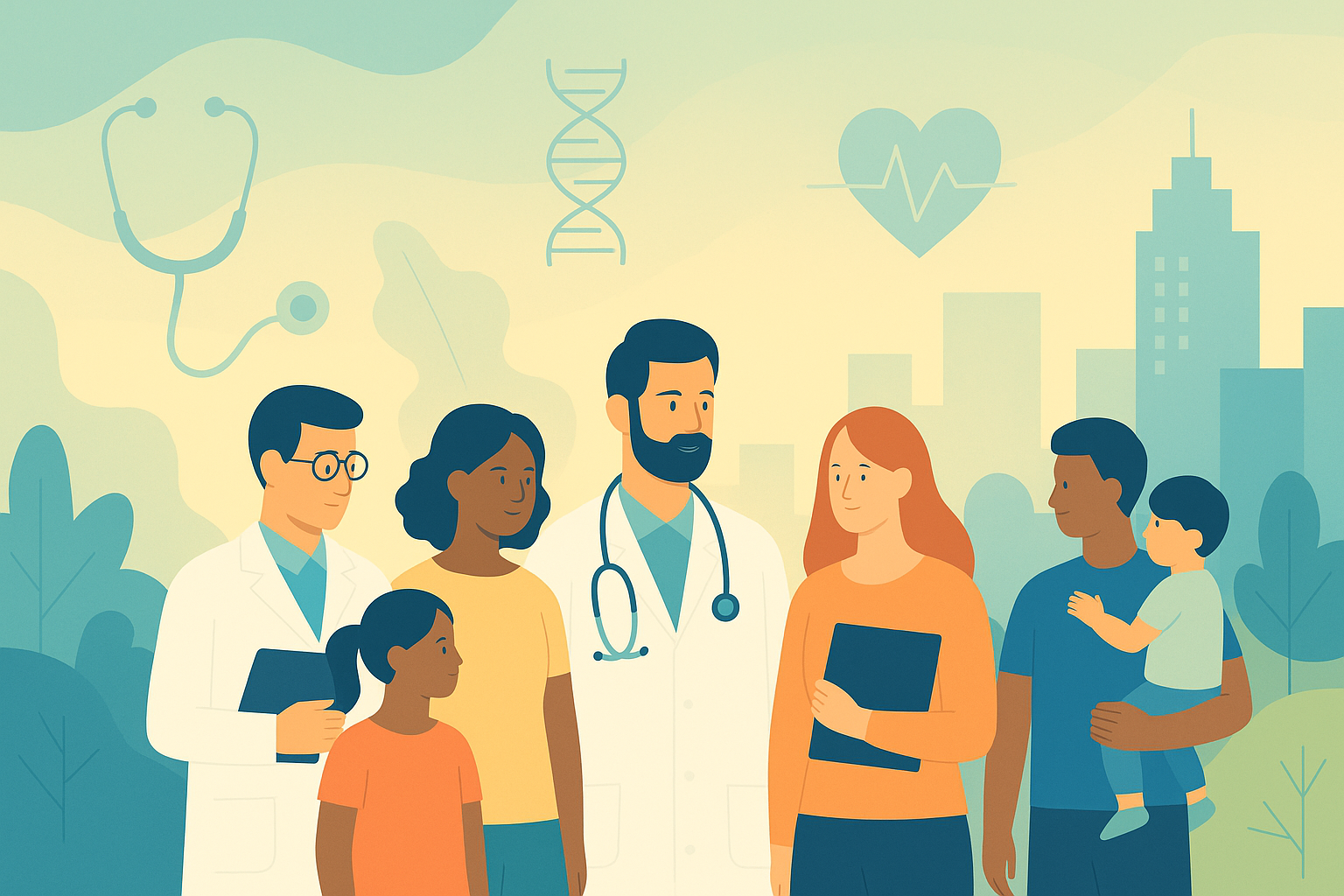
A conversation with Amanda Haboush-Deloye
How can we ensure that public health efforts truly reach the communities most in need, especially in times of crisis?

Dr. Amanda Haboush-Deloye, Executive Director of the Nevada Institute for Children’s Research & Policy and Associate Professor at UNLV, has spent her career asking (and answering) this question. With a deep commitment to culturally competent research and child and family well-being, Amanda brings both rigor and empathy to public health challenges in Nevada. In this conversation, she shares insights from a recent study that explored how the CDC’s Social Vulnerability Index (SVI) relates to COVID-19 vaccine uptake across Nevada’s counties.
While the data shows complex and sometimes surprising patterns, such as higher vaccination rates in counties with higher minority populations, Amanda emphasizes that numbers alone aren’t enough. Real equity comes from long-term community relationships, intentional engagement, and adapting public health strategies to meet people where they are.
What inspired you to explore the role of social vulnerabilities—specifically using the Social Vulnerability Index (SVI) and community engagement—when looking at vaccine equity?
Amanda: At the heart of our work is a commitment to looking at everything through an equity lens. When the pandemic hit, we knew right away that some populations would be more vulnerable based on their jobs, the resources they can access, and other factors. Social determinants of health are often outside an individual’s control, but they greatly impact health outcomes.
So, we wanted to be as data-driven as possible. We knew we didn’t have unlimited resources for COVID—or for public health work in general—so the SVI was a tool to help us decide where resources were most needed, and which types of resources would make the biggest impact. It helped us target specific areas and populations most at risk.
In the SVI study, you found that some themes—like minority status—were positively correlated with vaccination rates. How do you interpret that, and what does it mean for public health policy?
Amanda: There’s still a lot of work to be done in understanding how to best use the SVI and interpret that data. It’s not the only tool we used to select priority areas—it was relatively new—but we wanted to get as nuanced as we could.
When we started our vaccine equity efforts in Nevada, we didn’t assume we knew what communities needed. We partnered with seven different communities, asking: What language do you want to use? What concerns do you have about the vaccine? What images do you relate to? What’s the most effective way to get this information to you?
It was all about building comfort and trust. And I think that outreach helped increase vaccination rates in those communities.

“You can’t just go to a community when you need something from them. We stay engaged, even when the funding goes away.”
What challenges did you face in fostering relationships, either for this effort or in previous work?
Amanda: One big challenge is how research is traditionally done. Researchers often come in fast, collect the data they need, publish, and move on. But you can’t just go into a community when you need something.
What we try to do is stay engaged with communities over time. We already had some relationships in place before the pandemic because we’d taken years to build them. And for any new communities, we committed early on: if the funding dried up, we wouldn’t just disappear.
We can’t say, “We’ll be back when there’s money again.” We stay engaged, show that we’re invested, and demonstrate that we want to be real partners. It’s about sharing data, responsibility, and power. We’re intentional with language, too—like avoiding the term “stakeholders,” because of its colonial connotations. We want communities to feel ownership, not like they’re just a checkbox.
Yeah, that point about the language we use—like “stakeholders”—was actually brought to my attention just a couple of weeks ago. It really does matter. So, just one more question: Given the current federal climate, what are your hopes for the future of public health equity, and how can the kind of engagement strategies you’ve used help us get there?
Amanda: It’s honestly a little scary thinking about the direction things might go. But the core truth is this: each community is different. One approach isn’t going to work for everyone. Equity doesn’t mean giving everyone the same thing, it means giving everyone what they need to succeed.
For example, if everyone gets glasses, but I have 20/20 vision, that doesn’t help me. It’s about making sure people feel heard and are given the tools they actually need, not what’s easiest to provide.
When we built toolkits for those seven different communities, we didn’t use generic stock photos. We did photo shoots with community members from each group. It took more time and resources, but the result was so much better. People could see themselves in the materials.
To keep this work going, we need to stop rushing. Doing it right means investing the time and energy to listen, respond, and deliver resources in ways people can actually access and use. If someone can’t understand the language, or if the resource is 50 miles away with no transportation, that’s a failure, no matter how good the program looks on paper.
Honestly, what you’re describing reminds me of what first got me into implementation science 15 years ago—how good ideas need to match the real-world needs and constraints of the people we’re trying to help. That’s music to my ears.
Amanda: <Laugh> Yeah.
Don’t Let Science Pass You By
⚠️ Public health breakthroughs and threats are happening fast.
Missing one update could mean missing the chance to act, advocate, or lead. Stay sharp, stay informed—with our weekly science brief, trusted by changemakers.✅ Subscribe now—it’s free and essential.
📣 Share this blog to grow the circle of informed action.



